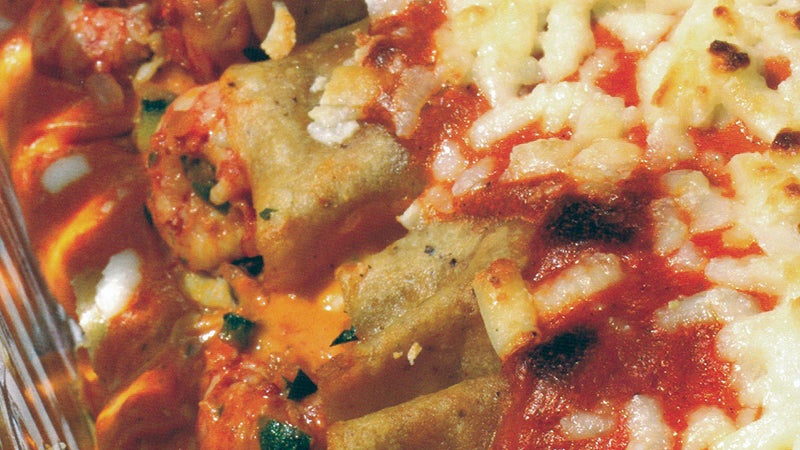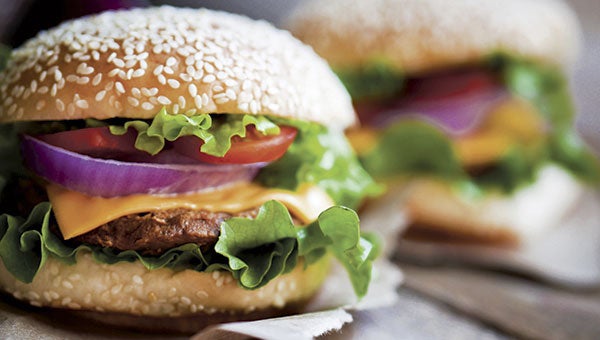Beans: The South’s produce heirloom
Published 12:01 am Saturday, June 9, 2012
Green beans, string beans and snap beans are coming into the markets locally now. We have had a poor pea crop this year. But the green beans appear that they are going to be good. I prefer pole beans as they produce over a longer period of time. I have been growing Rattlesnake beans for several years and save seed. They are “a heavy producer in the hot, humid areas…of the South,” according to the seed catalogue, and I tend to agree. This year, I tried a new one, Louisiana Purple Pod – another one touted as a “beautiful Southern heirloom with prolific, drought-resistant vines.” They turn green when cooked, and it looks like they are going to be a good producer, too. If you want to grow your beans, perhaps on a patio trellis, the Louisiana Purple Pod has purple vines too and therefore more colorful. If you have your own beans in the garden, you can choose to harvest when small and stringless or let them get larger and more mature.
In John Edgerton’s Southern Food, he notes “there is only one basic way to cook them: very slowly, in a black pot or skillet, with a ration of cured pork or bacon grease added to enhance the flavor.” He notes two variations of the cooking method. You can either simmer a 2-inch cube of salt pork or a small piece of country ham hock in a deep, covered pot or skillet with 4 cups of water for one hour or more. Put in 1 pound of beans and cook them covered over low heat for three to four hours. Stir occasionally and add water if necessary. Some salt may be needed if the pork is not enough, or put 2 tablespoons of bacon grease in a heavy iron skillet over medium heat. When the grease is hot, put in the beans. Reduce heat to simmer. Cover and cook slowly for three hours or more. It may be necessary to add a little water now and then, but condensation in the closed pot should provide most of the moisture needed. Add salt if necessary. He notes some cooks add a little sugar or a pod of red pepper or an onion to the pot. Throughout the South, this is a mess of beans – the most popular dinner-table side dish.
Sheri Castle in her The New Southern Garden Cookbook notes, “Few aspects of southern cooking are more maligned and misunderstood than the issue of how long to cook vegetables, particularly snap beans. At one time, most snap beans were sturdy pole beans with thick, tough pods that required extensive cooking to become edible.
Subjecting the newer stringless varieties to long cooking would dissolve them into a tasteless mess. Each variety of bean requires the appropriate approach. If a bean pod is delicate and tender enough to eat raw, it needs quick, gentle cooking. If a bean pod is thick and has strings that must be pulled off, it needs long, slow cooking.”
My favorite Southern chef, Frank Stitt, gives this recipe in his Southern Table.
Pole Beans with Onions and Potatoes
2 onions, quartered
Several thyme sprigs
Several savory sprigs
1 teaspoon kosher salt
2 garlic cloves, crushed
2 quarts water, preferably spring water (Now where does he get this?)
1 pound small new red or white potatoes, scrubbed and halved
2 pounds pole beans, strings and stem ends removed
1 tablespoon extra- virgin olive oil
Combine the onions, herbs, salt, and garlic in a medium pot, add the water, and bring to a boil. Add the potatoes and cook for five minutes. Add the beans and cook until tender, 10-15 minutes. Drain and reserve the broth for another use. Serve drizzled with olive oil.
I usually do my beans this way.
Green Beans with Onions
Measure 2 cups of water and 2 cups of beans in a pot, and then add a tablespoon of salt. Add ½ chopped onion and a few red pepper flakes. Cook for five to seven minutes over medium-high heat. Drain. Add a splash of olive oil and heat gently and finish with freshly ground pepper and salt if needed.
Julia Child in Mastering the Art of French Cooking tells us to blanch beans in a large kettle of rapidly boiling salted water until tender or almost tender and drain immediately. She talks about 10-15 minutes and suggests tasting to test the tenderness.
Haricots Verts a l’Anglaise (Buttered Green Beans)
Toss the hot beans in the saucepan over moderately high heat to evaporate their moisture. Toss briefly with salt and pepper. Turn them into the serving dish and distribute 4-8 Tb of butter cut into pieces over them.
Haricots Verts a la Maître d’Hôtel (Buttered Green Beans with Lemon Juice and Parsley)
Toss the hot beans in the saucepan over moderate high heat to evaporate their moisture. Toss with salt, pepper and a piece of butter. Add 6-8 Tb softened butter gradually alternating with drops of lemon juice (2-3 tsp). Taste for seasoning. Turn into the vegetable dish and sprinkle with parsley.
I learned a few years ago how good vegetables can be when roasted. Sheri Castle suggests:
Oven-Roasted Whole Beans
1-1 ¼ pounds slender beans, ends trimmed (Save sturdy bean-filled pods for recipes that bring out their flavor through long cooking.)
1-2 tablespoons extra-virgin olive oil
1 teaspoon kosher salt, or to taste
½ teaspoon ground black pepper or to taste
Preheat the oven to 450 degrees.
Put the beans on a rimmed baking sheet, drizzle with enough oil to moisten, season with salt and pepper, and toss to coat. Spread the beans in a single layer and roast until tender with a few browned spots, for six to 10 minutes.
You can also use infused olive oil, such as garlic, lemon, basil or mushroom.






